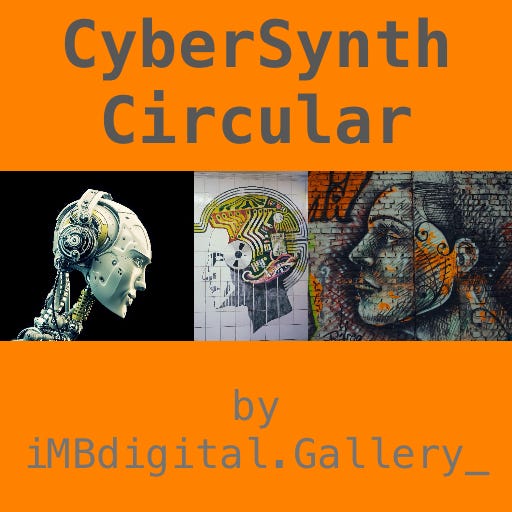Why Bitcoin Is Considered an Old Blockchain — And How It Compares to Blockchain 2.0
Why is Bitcoin considered an old blockchain? Explore its limits and how Blockchain 2.0, smart contracts, and dApps are shaping the decentralized future.
Intro
Bitcoin, introduced in 2009 by the pseudonymous Satoshi Nakamoto, was the first real-world application of blockchain technology. It revolutionized digital currency by enabling a decentralized, peer-to-peer payment system without the need for intermediaries.
However, as blockchain technology evolved, new versions emerged, offering expanded capabilities and addressing many of Bitcoin’s inherent limitations. This blog explores why Bitcoin is considered an “old” blockchain and compares it with Blockchain 2.0, illustrating why Bitcoin isn’t well-suited for smart contracts and decentralized applications.
Bitcoin: The Pioneer of Blockchain Technology
Bitcoin’s blockchain — often dubbed Blockchain 1.0 — was specifically designed to support its native cryptocurrency. At its core, it functions as a decentralized ledger that securely and immutably records all transactions.
Here are Bitcoin’s key characteristics:
Decentralization: Maintained by a global network of nodes, Bitcoin’s blockchain ensures that no single entity has control over the system.
Security: Transactions are secured using robust cryptographic algorithms, making it nearly impossible to alter historical records.
Immutability: Once a transaction is recorded on the blockchain, it cannot be modified or deleted.
Proof of Work (PoW): Bitcoin relies on a PoW consensus mechanism, requiring miners to solve complex mathematical problems to validate transactions and append new blocks.
While these features make Bitcoin a groundbreaking and secure digital currency, they also introduce significant limitations — especially when it comes to scalability and programmability.
Blockchain 2.0: Expanding the Possibilities
Blockchain 2.0 refers to the next evolutionary stage of blockchain technology, moving beyond cryptocurrency to support a wide variety of decentralized applications (dApps) and smart contracts.
Ethereum, launched in 2015, is the most well-known Blockchain 2.0 platform. Its key advancements include:
Smart Contracts: Perhaps the most transformative innovation of Blockchain 2.0, smart contracts are self-executing agreements with the contract terms directly encoded. They automatically execute and enforce conditions when predefined criteria are met.
Turing-Complete Programming Language: Blockchain 2.0 platforms like Ethereum use Turing-complete languages, allowing developers to write complex and versatile dApps.
Improved Scalability: Blockchain 2.0 seeks to overcome Bitcoin's scalability issues through alternative consensus mechanisms (e.g., Proof of Stake) and layer-2 solutions.
Decentralized Applications (dApps): Beyond simple financial transactions, Blockchain 2.0 supports a broad range of use cases — from supply chain management and voting systems to decentralized finance (DeFi).
Why Bitcoin Isn’t Suitable for Smart Contracts
Bitcoin’s blockchain was never intended to support smart contracts. Why?
Limited Scripting Language: Bitcoin employs a simple, stack-based scripting language that is deliberately non-Turing complete. This limits its ability to support the complex logic and conditions required for smart contracts.
Prioritization of Security and Simplicity: Bitcoin’s design prioritizes security and reliability over programmability. Adding complex smart contract functionality could increase the system’s attack surface and undermine its foundational security.
Scalability Constraints: Bitcoin’s PoW mechanism is both energy-intensive and slow, making it impractical for the high transaction throughput necessary for robust smart contracts and scalable dApps.
Bottom Line Conclusion
Bitcoin remains a pioneering innovation that laid the foundation for digital currencies and decentralized systems. However, due to its limited programmability and scalability, it is widely considered an “old” blockchain.
Blockchain 2.0 platforms — exemplified by Ethereum — have significantly expanded the potential of blockchain technology by introducing smart contracts and supporting a diverse range of decentralized applications.
As the blockchain ecosystem continues to evolve, we can expect further advancements that overcome existing limitations and unlock even greater possibilities for decentralized systems.
Real-World Applications of Smart Contracts
The versatility of smart contracts is transforming industries across the globe. Here are some prominent examples:
Decentralized Finance (DeFi): Platforms like Aave and Compound utilize smart contracts to automate lending, borrowing, and trading of cryptocurrencies, eliminating the need for traditional financial intermediaries.
Supply Chain Management: Smart contracts automate and verify the transfer of goods and payments. For example, IBM’s Food Trust uses blockchain to track food products from farm to table, ensuring transparency and traceability.
Insurance: Smart contracts can streamline claims processing. For instance, in the event of a flight delay, a smart contract could automatically trigger a payout to the insured passenger, bypassing the need for manual claim submission.
Real Estate: Platforms like Propy leverage smart contracts to automate property transactions, facilitating faster, more transparent transfers of ownership and funds, and reducing the reliance on intermediaries.
Voting Systems: Blockchain-based voting platforms, such as Horizon State, use smart contracts to ensure secure and tamper-resistant voting processes.
Digital Identity: Projects like uPort use smart contracts to enable individuals to control their digital identities, securely managing how personal information is shared and verified.
These examples showcase how smart contracts are driving automation, enhancing transparency, and improving efficiency across various sectors.
Enhancing Privacy in Smart Contracts
While smart contracts inherently operate on public blockchains — where transaction data is visible to all participants — several techniques are available to enhance privacy:
Zero-Knowledge Proofs (ZKPs): ZKPs allow one party to prove the validity of a statement without revealing underlying information. For example, zk-SNARKs are used in privacy-centric cryptocurrencies like Zcash.
Confidential Transactions: This method conceals transaction amounts while ensuring their validity, adding a layer of privacy.
Ring Signatures: Employed by cryptocurrencies like Monero, ring signatures obscure transaction origins by mixing multiple potential signers.
Mixing Services: These services combine multiple transactions to obfuscate the relationship between senders and recipients.
Private Blockchains: Organizations can implement permissioned blockchains where access is restricted, ensuring that only authorized participants can view and interact with data.
Off-Chain Transactions: Moving certain transactions or data off the main blockchain can reduce public visibility while maintaining the benefits of blockchain security.
Trade-Offs of Privacy-Enhancing Techniques
While privacy-enhancing features bring important benefits, they also introduce trade-offs:
Increased Complexity: Techniques like ZKPs and ring signatures make smart contracts more complicated to develop and audit.
Performance Overhead: These methods often require additional computational resources, leading to slower transaction processing and higher costs.
Reduced Scalability: Enhanced privacy can increase transaction sizes and strain network capacity.
Lower Transparency: Privacy measures may limit public auditability — a foundational blockchain characteristic — posing challenges for regulatory compliance.
Interoperability Challenges: Not all privacy solutions are compatible with every blockchain platform.
User Experience: Additional privacy controls can complicate the user experience, potentially deterring mainstream adoption.
Cost Implications: Advanced privacy measures often increase transaction fees due to higher computational demands.
Despite these challenges, privacy-enhancing technologies are essential for applications where confidentiality is critical — from enterprise solutions to sensitive personal data management.
Final Thoughts
Bitcoin ignited a technological revolution, but it’s only the starting point. Blockchain 2.0 platforms like Ethereum have expanded the boundaries, enabling a new era of decentralized applications powered by smart contracts.
As innovation continues, the blockchain landscape will undoubtedly grow more sophisticated, secure, and versatile — paving the way for Blockchain 3.0 and beyond.
If you’d like to dive deeper into any specific blockchain topics, smart contract use cases, or privacy technologies, feel free to reach out. The decentralized future is being written — block by block!













